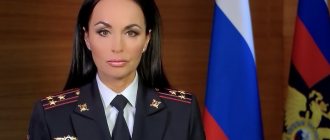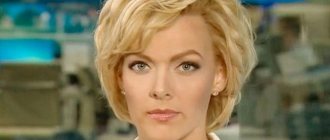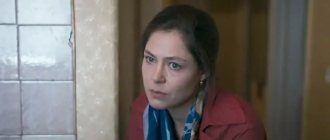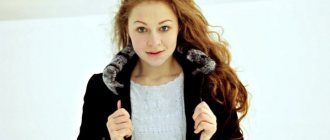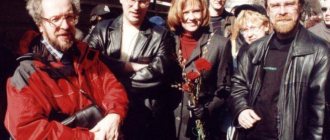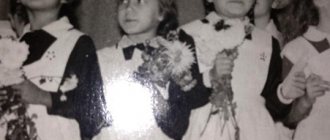Biography of the choreographer
Rudolf Nureyev is one of the most famous and without a doubt legendary ballet dancers, who is still looked up to today. The man performed successfully not only on the territory of the Soviet Union, but also abroad. His dance parts simply captivated the audience, causing them to burst into applause. Nureyev's dance technique is studied in ballet schools around the world, and his jumps have become truly textbook.
But, despite his enormous popularity, there were many difficulties and problems in the artist’s life. Partly to blame was Rudolf's unconventional sexual orientation and problems with officials of the Ministry of Culture. All this forced the man to ask for political asylum during a foreign tour in France, making him one of the most notorious refugees in Soviet history.
The childhood and youth of Rudolf Nureyev
The boy was born during the terrible years of Stalin's purges and relocations of entire peoples. His hometown is listed as Irkutsk, but in fact he was born on a train, and the birth of the child was simply recorded at the nearest station. The parents of the future star came from simple, poor peasants. Nureyev had Tatar and Bashkir roots. His mother, Farida, was a Tatar and lived in the Kazan province, and his father, Khamet, was a Bashkir and previously lived in Ufa.
He was an intelligent man and was able to graduate from a Muslim school - madrasah. After the revolution, Khamet sided with the Soviets and joined the army, where he became a political instructor. As a military man, he and his wife were often transferred from one unit to another. And so, on March 17, 1938, on a train passing near Lake Baikal, Farida gave birth to his son. In addition to Rudik, there were already three girls in the family, so Khamet was very happy about the appearance of his son.
A year and a half later, the man was transferred to the capital - the city of Moscow, where he moved with his entire family. With the beginning of the Great Patriotic War, Rudolf's father went to the front. In 1941, Farida and her children were evacuated and settled in the suburbs of Ufa. Little Nureyev's childhood was difficult; he had to experience all the hardships of wartime. He and his family huddled in a small room, and hunger and poverty were their constant companions.
When Rudik turned five years old, a significant event happened that influenced his future. Farida, in order to add some variety to her dull everyday life, took her children to the Ufa Opera House to see the ballet performance of “The Crane Song.” What the boy saw on stage was a real shock for him. He was delighted by the theatrical, festive, pompous atmosphere.
Rudolph was impressed by the sparkling crystal chandeliers, gilding on the walls, the lush curtain and the bright outfits of the artists. It was then that the boy firmly decided that in the future he wanted to dance in the theater. Nureyev enrolled in a children's folklore ensemble, where he enthusiastically began to learn the basics of choreography, and then traveled with other children around the region and performed in hospitals, factories and nearby villages. Teachers and acquaintances of the mother vying with each other praised the boy, noting his obvious talent.
But then the war ended, and his father returned from the front. Hamet was very dissatisfied with his son’s hobby, considering it not a man’s activity. He wanted the boy to become a doctor or engineer in the future, and not “jump around” on stage. His classmates also laughed at Rudolf, especially when Nureyev came to school dressed as his older sisters. But the boy, despite everything, stubbornly continued to study ballet.
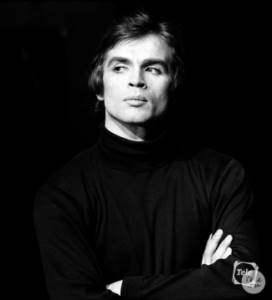
Rudolf Nureyev - biography
Rudolf Nureyev is a legend of Russian and world ballet, the most outstanding dancer of the last century.
Childhood
Rudolf Nuriev was born on March 17, 1938 in the family of Farida and Khamet Nuriev. His father was a political commissar in the Red Army. In all biographies, the birthplace of the future stage star is recorded in Irkutsk, and the actual place of his birth is the train in which the pregnant Farida was traveling after her husband to Vladivostok. Hamet was very happy about the birth of his son and named him Rudolf. Before this, three girls were born in the family - Rosa, Rozida and Lydia.
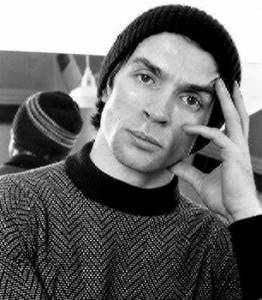
Photo: Rudolf Nureyev in his youth
The family lived in Vladivostok for a year and a half, until the father was transferred to a new duty station, in Moscow. Here they settle in a small wooden house, live like everyone else, not richly. Life is gradually getting better, but all the plans and ideas failed to come true - the war began. The father goes to the front in the front row. The family remained in Moscow, but was soon evacuated along with other military families. They ended up in Chelyabinsk, and then ended up in the village of Shchuchye, not far from Ufa. Rudolph remembers the war years with difficulty; nothing remains in his memory except cold, hunger and constant darkness. The boy was nervous and often cried, probably because he had to fight for food and survive in terrible conditions.
When he was 5 years old, he saw ballet for the first time. It was "Crane Song". Little Rudolph firmly decides to dance. Farida did not hesitate for a long time and allowed her son to study in the dance club of the kindergarten. The boy studied with great enthusiasm; the wounded soldiers really liked the performance of their circle. At the sight of the little dancing boy, everyone was delighted and amazed at his enormous talent.
Youth years
After the Victory in 1945, the father returns, but the children have forgotten how to see him as a loved one. They got a room in a communal apartment, which was warm and bright, and life gradually began to improve. The father did not like his son’s occupation; in the future he saw him as an engineer.
When the boy was 10 years old, he began to study in the dance club of the Pioneer House. His first teacher was A.I. Udaltsova, she immediately recognized the talent in the child and advised him to continue his dance studies in Leningrad.
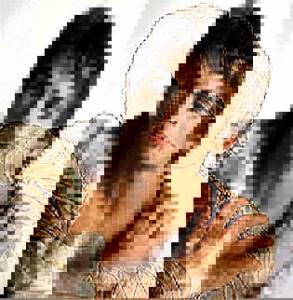
Photo: Rudolf Nureyev
In 1955, a young man receives an unexpected gift from fate. The Bashkortostan Art Festival has opened in Moscow. His dance troupe was supposed to perform the ballet “The Song of the Crane,” but the soloist suddenly fell ill. And young Rudolf offers his services, even though he doesn’t know the party at all. His candidacy is approved, but the guy has to learn the entire game in a short time. He was able to do this, but his health was compromised. There was no time to recover, a young dancer with an injury goes on stage and conquers the audience. It was at this moment that it became clear to his teachers that a “fierce Tatar” had appeared in Russian ballet.
After this fateful performance, Rudolf decided to enter the capital's choreography studio, but they did not provide hostel accommodation for nonresidents. So he ends up in Leningrad and in 1955 he enters the Leningrad Choreographic School. He did not know that children begin to study at the age of 12 and his classmates have gone far ahead in terms of mastery. They make fun of him, he finds it difficult to get along with other students. Further residence in the hostel becomes impossible. He is saved by his mentor, Alexander Pushkin, who offered to live with his family.
In 1958, Rudolf graduated from the choreography school and became a member of the troupe of the Kirov Opera and Ballet Theater in Leningrad. The prima ballerina of this theater N. Dudinskaya insisted on this invitation.
Life in ballet
The artist’s first professional performance took place immediately after graduation. He took part in a competition held in Moscow. His partner was A. Sizova. The duo's performance was brilliant; the commission was delighted with the solo part of the young talent. He was distinguished by his extraordinary style of dancing; no one had ever seen such a technique before. The ballet "Laurencia" brought them gold in this competition, but Rudolf refused to accept the award. Upon returning to Leningrad, he dances “Gayane”, but with another partner - N. Kurgapkina. After that there was “Sleeping Beauty”, “Swan Lake”. The Mariinsky Theater was literally boiling, and Nuriev was at the epicenter of this boiling.
He receives a gold medal, having conquered the World Festival of Youth and Students, which was held in Vienna, with his dance. After three years of work in the theater, Rudolf takes an important place in the troupe and becomes the hope of the entire theater. Then there were triumphant performances in Bulgaria, East Germany, and Egypt. After this, Nureyev easily receives a visa to travel to France. And the dancer went to conquer the Paris Opera. But he managed to perform in France only a few times; by order of the KGB, he was removed from the repertoire of performances and had to be sent home to the Soviet Union.
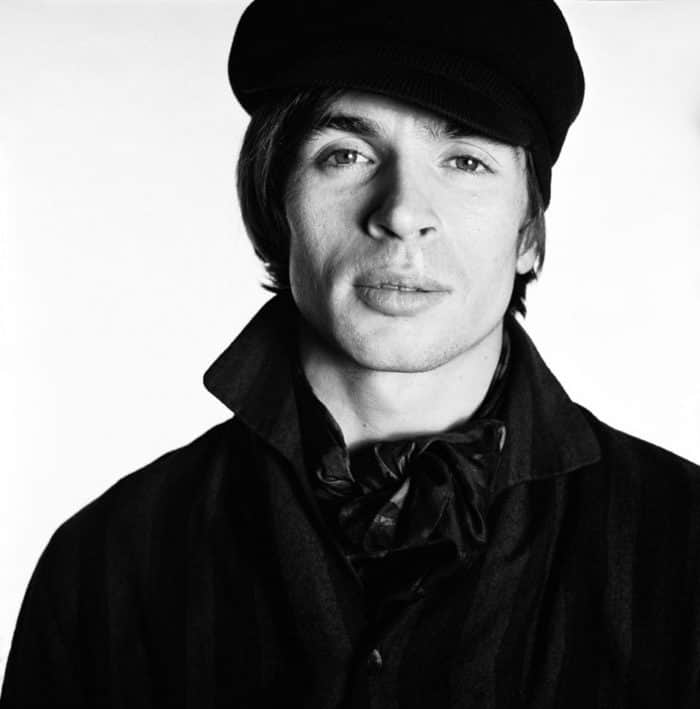
The official version of the reason for this decision is a violation of the regime while staying abroad. But most likely the reason was the artist’s unconventional orientation. Rudolf did not comply, asked for political asylum in France and never returned to the Soviet Union, where prison awaited him. Quite a long time passed, and Rudolf was allowed to enter the Union, but it was short-term. The dancer was only able to come for 3 days to bury his mother.
Rudolf Nureyev becomes a member of the Marquis de Cuevas Ballet troupe, but after 6 months he is forced to leave France - they refused to grant him political asylum. The talented dancer was happily accepted in the UK; he settled in London and performed a duet with the famous ballerina Margot Fonteyn. Their acquaintance occurred in 1961, when Margot was 40 years old and was about to leave the stage. She stayed, and the duo existed for 15 long years. Their parts in Giselle were applauded by the English and American public. Their friendship lasted a lifetime, and ended only after Margot's death.
We recommend: Biography of Galina Volchek
Rudolf Nureyev performed in different countries and worked a lot and fruitfully. In the 60s he had up to two hundred concerts a year, after 1975 he began to give 300 concerts, i.e. worked almost every day.
Dancer character
Undoubtedly, Rudolf was talented and selfless on stage, but in everyday life he was not very loved. He was arrogant and arrogant. The boy's childhood was not easy, this also left an imprint on his fate.
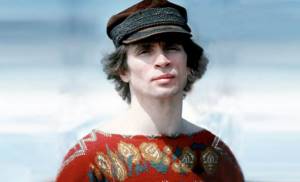
Feeling his superiority over others, he became uncontrollable - he was rude to his partners, ignored the rules of behavior in the team and violated discipline. He could tell a colleague that she was untalented, and sharply, without choosing any expressions.
Having become more mature and having risen to an unattainable height, with his sky-high fees, he did not pay the bill in a restaurant, became hysterical in the theater, and annoyed everyone with his wild antics. The audience was ready to carry their idol in their arms, but those who were closely acquainted with him considered him a disgusting rude man.
Acting and conducting career
His first film role was back in the USSR. The film “Soulful Flight”, which was filmed specifically for the All-Union Review of Choreography Schools. Then there were other roles in various ballet films. But there are also real roles in feature films - the biographical drama “Valentino” and in the film “In Plain Sight” together with the young N. Kinski.
Rudolph also tried himself as a choreographer, staging classical performances in his own version. His production also included the ballets “Tancredi” and “Manfred,” which were particularly original.
During the leadership of the Grand Opera troupe in Paris, he tries to give scope to young artists, promoting them to the best roles, and in defiance of the current hierarchy of already famous soloists and approx. World practice has never known this before.
At the end of his life he had to forget about dancing, but parting with the theater was like death and Rudolf became an orchestra conductor. He was even invited to post-Soviet Russia as a conductor when it was necessary to conduct the ballets “The Nutcracker” and “Romeo and Juliet” in Kazan.
Personal life
In Rudolf’s personal life there were exclusively men - the famous dancer did not hide his homosexuality. Although, according to the testimony of some of his acquaintances, in his youth he started romantic relationships with girls.
At different periods of his life, no less famous personalities were next to the great actor. He is credited with having an affair with musician Freddie Mercury, fashion designer Yves Saint Laurent, and singer Elton John. But the love of his life can be called the Danish dancer Erik Brun. Their relationship existed for a long time - twenty-five years, until Eric died in 1986. Their relationship was not easy; the temperaments of the Russian and the Dane were too different.
Death
According to the official version, Rudolf Nureyev died of heart disease, but everyone knows that such a conclusion is far from the truth. In 1983, a blood test on Rudolph revealed the presence of the immunodeficiency virus, which has been called the plague of the 20th century. The disease progressed, because the dancer refused to admit that he had AIDS, did not undergo any examinations and did not take medications. Ten years after the diagnosis was confirmed, the great dancer passed away. This happened on January 6, 1993 in a Paris clinic. His dying wish was fulfilled exactly - the Russian cemetery of Sainte-Genevieve-des-Bois became the burial place, and a bright Persian carpet was placed on top of the grave.
The work of Rudolf Nureyev is very highly valued in his homeland, even though he left it at one time. The Bashkir College of Choreography, a street in the city of Ufa, bears his name, and a museum has been created. Every year a classical dance festival dedicated to Rudolf Nureyev is held in Kazan.
The relevance and reliability of information is important to us. If you find an error or inaccuracy, please let us know. Highlight the error
and press the key combination
Ctrl+Enter
.
Career and dancing
When he was 11 years old, Rudolf’s teacher was an ex-member of the famous Diaghilev ballet troupe. It was Anna Udaltsova who noted Nureyev’s amazing abilities, as well as his determination. In addition to dancing, he loved to read, studied French and played the piano. At the age of 15, the talented young man began performing successfully on the stage of the Ufa theater, but he felt cramped in the provincial city.
After weighing all the pros and cons, Rudolf, at the age of 17, decides to go to Leningrad to enter the famous choreographic school. The guy successfully passed the selection, despite his young age, but the examiners noted that either great success or great failure awaited him. After the start of training, the student developed a complete hostility and misunderstanding with the teacher, so they wanted to expel Nureyev from the school.
But the guy decided to take a desperate step, submitting an application to change his teacher. They met him and transferred him to the senior class, to another teacher. The experienced teacher found a common language with the student and helped him in every possible way to develop his talent.
In 1958, Nureyev successfully completed his studies and was accepted into one of the best ballet groups in the country performing on the stage of the Theater. Kirov (now Mariinsky). It was here that the young guy’s talent was revealed in all its glory. He made his debut in the ballet Laurencia, dancing the part of the brave Frondoso.
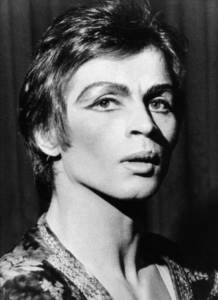
The bright, charismatic dancer was persuaded to transfer to the main theater of the country - the Bolshoi. But Rudolf flatly refused to leave Leningrad, which had become his home. In just three years, the artist danced in 14 performances, the most famous of which are:
- "La Bayadère";
- "Sleeping Beauty";
- "Don Quixote".
Every day the dancer's popularity grew, he delighted the audience with his unbridled energy, highest skill and acting. Nureyev surprised fans with his soft jumps on stage, like a nocturnal predator, and amazed his fans with his swift pirouettes and the originality of his performance of each part. In addition, Rudolph was distinguished by a tough disposition and a quick-tempered character, which, together with his non-traditional sexual orientation, made him a constant participant in various scandals and caused dissatisfaction on the part of the management.
“Nureyev taught us that performance is a living substance”
Elisabeth Platel considers herself and her peers to be Nureyev’s generation, admires the work of Laurent Hilaire, artistic director of the MAMT ballet, and admits that she will only be amazed by the artist who can find a balance between virtuosity and expressiveness. The famous dancer, director of the Paris Opera Ballet School told Izvestia about this on the eve of the gala concert of the Benois de la Danse festival, which will take place on June 9 at the Bolshoi Theater.
— You were on the jury of the Benois de la Danse competition, which is always headed by Yuri Grigorovich. How did you feel when you arrived in Moscow?
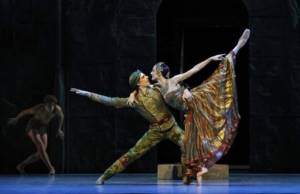
“Dancing means going against the laws of physics and gravity”
Etoile Germaine Louvet - about Nureyev's legacy, predatory capitalism and the fake world of social networks
— First of all, I was looking forward to meeting my Russian friends, my ballet family, united by the festival and the Benois de la Danse award, which I had the honor of receiving in 1999. Besides, I'm glad to be back in Russia again. I am proud that I am one of the few French ballerinas who were invited to Russia to perform the main roles in La Bayadère and Raymonde. I really appreciate the great ballets of Marius Petipa staged by Rudolf Nureyev. I was also lucky that at the age of 17, very young, I danced in “Ivan the Terrible” by Yuri Grigorovich, then worked with Oleg Vinogradov (director of the ballet troupe of the Kirov Theater - Izvestia). These were important events in my career.
— Young French etouiles Amandine Albison and Paul Marc took part in the competition.
“They embody the best that distinguishes the Paris Opera company in both classical and modern repertoires. These are the artists of today who personify French ballet.
— It seems that it is the graduates of your ballet school who hold the record for the number of Benois de la Danse awards?
- Really, I don’t know, I didn’t count. One way or another, 92% of the dancers at the Paris Opera graduated from her school. We have a blood connection, a common breath, which ensures the continuity of traditions and style. Whatever the era, we always speak the same language. This applies to both Amandine and Paul.
Nureyev taught us

Amandine Albison in the ballet "The Lady of the Camellias"
Photo: Opéra national de Paris
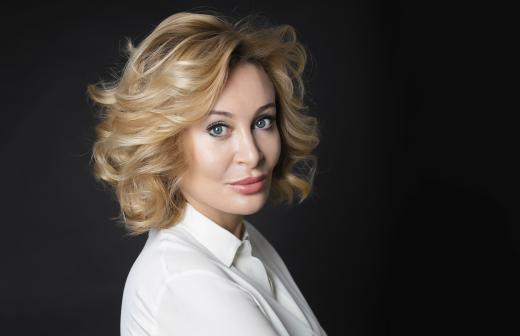
"As long as we are alive, we move"
Head of the Dance open festival Ekaterina Galanova - about the millstones of the lockdown, a gala concert with a reserve and hopes for spring
— What distinguishes your school from the Vaganova Academy of Russian Ballet and the Moscow Academy of Choreography?
“I don’t find much difference between them.” From a historical point of view, all three have rich traditions, which they manage not only to preserve from generation to generation for decades, but also to update. With all this, I want our artists to have their own identity. When Amandine Albison steps on stage, you immediately see that she is an artist of the Paris Opera. The same applies to graduates of Russian ballet schools. You often see excellent ballerinas, but you don’t know who is performing - Italian, Spanish or American. I don't want everyone to dance the same way. I think that our three schools do not stop searching, are influenced, borrow the best, but maintain their originality.
— When your graduate first appears on the Parisian stage, do you know in advance what fate awaits him? Is everything destined?
- Not in any way. We train gifted children, with whom we make a long ascent to mastery. But as soon as they get to the theater, a completely different path begins for them, which they follow with the entire troupe. Children come to us at the age of nine, and it is extremely difficult to imagine which of them will become etoile in 15 years.
Pandemic steps: what do you remember about Dance Open during the coronavirus era?
One of the largest ballet festivals was celebrated with world premieres and foreign participants
— Is your school a source of personnel for the capital’s ballet elite, to which only Frenchmen are selected? And if tomorrow a young talent from another country wants to study with you, will they not tell him that he has entered the wrong door?
— There are two paths that lead to this troupe. The first, priority, is through our school. It is quite natural that we have more French people. The school is public and free. You only have to pay for boarding and food. But we also accept non-French people. Due to historical traditions, we have quite a lot of Italians, Spanish students, and now also Russian, Ukrainian, Australian, Canadian, Japanese.
The second way is annual competitions open to everyone. Among our etuales is the Argentinean Lyudmila Pagliero (she graduated from the ballet school in Buenos Aires, and in Paris began her career in the corps de ballet in Ivan the Terrible, staged by Yuri Grigorovich - Izvestia). Among the first soloists are a Korean and a New Zealander. In short, our troupe is not at all closed to foreigners.
Nureyev taught us
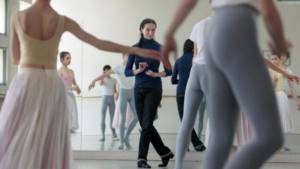
Elizabeth Platel
Photo: La Personne/lapersonne.com
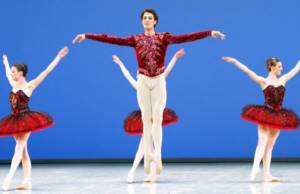
“I don’t have enough space in my home cage”
Etoile of the Paris Opera Ballet by Mathieu Gagno - about rehearsals in captivity, the benefits of yoga, ballet matriarchy and Prince Kurbsky
— Is it right to consider the French ballet style refined, impeccable, strict and rational?
— We attach great importance to the academic side of dance, the precision of gesture. As for Russian artists, they are distinguished by strong emotionality. This is clearly visible in the ballets of Yuri Grigorovich - “Spartacus”, “Ivan the Terrible”, with their characteristic por de bras (hand movement - “Izvestia”), which French dancers would not dare to do.
— When Rudolf Nureyev headed the Paris Opera Ballet in 1983, you were already performing at the rank of etoile. Nevertheless, the meeting with him turned out to be fateful for you: he offered you almost all the main roles in his productions.
- Indeed, I was incredibly lucky - however, not only me, but also my entire generation, which turned out to be ready to meet Rudolf. It was he who helped us find our “I” in dance, staging “Don Quixote”, “Raymonda”, “Swan Lake”, “La Bayadère”. He was very Russian, absorbing the traditions of his school - temperamental, explosive, demanding, who treated the stage as a sacred place. He taught us to open our eyes to everything new. He had a spiritual connection with us, young artists, who were open to all his suggestions.
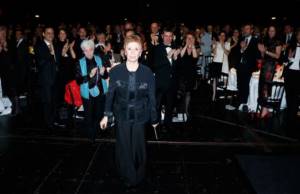
“I dream of inviting Nureyev to France”
The head of the International Dance Festival in Cannes, Brigitte Lefebvre, talks about the Bolshoi Theater performance and the personnel breakthrough at MAMT
— You were called Nureyev’s generation.
“They still call us that now.” We are still here, closely connected with ballet. I head the school, Laurent Hilaire directs the Moscow Stanislavsky and Nemirovich-Danchenko Theater, Manuel Legris directs the Milan La Scala ballet, Isabelle Guerin stages performances all over the world.
— Nureyev was often tough, almost ruthless, with artists. Why did they forgive him everything?
- Because Rudolf led us to unattainable heights. And I would not talk about the difficulties of working with him, but about the enthusiasm with which we followed him. He was obsessed with creative madness, and when he staged ballets unknown to us, he continued to search and create something new in each performance literally five minutes before the curtain rose.
Nureyev taught us
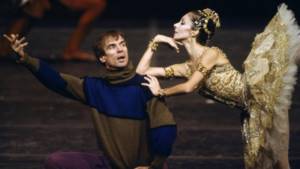
Rudolf Nureyev and Florence Clerc, 1986
Photo: Getty Images/Pierre Perrin
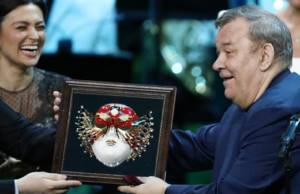
"Mask" asked: who was awarded the prestigious theater award
The leader in the number of awards was the Bolshoi
— You said that Nureyev did not give you the role you asked for. What ballet are we talking about?
“I remember that I had already danced in his productions of “Raymonda” and “Swan” and told Rudolf that I would like to perform in his other ballet, “Romeo and Juliet.” He replied: Do your job! In other words, “it’s not yours.” Nureyev saw me more in princesses than in Juliet. His words did not upset me at all: he never limited me, unlike other ballerinas, to a few roles. As soon as he saw that there was my job in the ballet, he immediately gave me “my” role.
— How did Nureyev the choreographer enrich the ballet?
- Desire for risk. He taught us to understand that a performance is a living substance in which we must dare and not be afraid of slipping or falling. Rudolf wanted us to be fearless on stage. He convinced that it was not an accidental fall that ruined the performance, but the fear of making a mistake.
— Why have his performances dominated the repertoire of the Paris Opera for four decades?
— They are more interesting than other productions of the same ballets. His “Swan” is still strikingly relevant today. There are many wonderful parts in his ballets. Rudolph believed that actors should be given food. When, after his performances, we were invited to play the same role in another production, we were almost always disappointed, because we danced less in them.
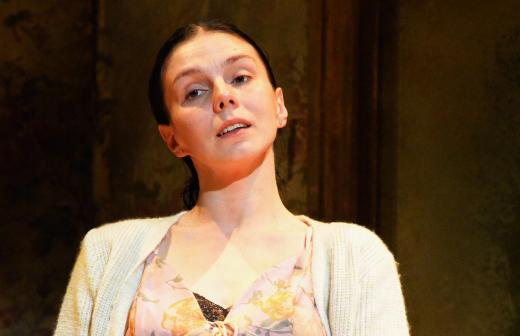
“I had to postpone my wedding due to coronavirus”
Prima ballerina of the London Royal Ballet Natalya Osipova talks about her engagement to dancer Jason Kittelberger, cancellation of tours and unsuccessful walks with dogs
— Aren’t you surprised that his ballets are still almost never staged in Russia?
— In my opinion, his “Don Quixote” at the Stanislavsky Theater was a success. I remember the last time I danced on the stage of the Bolshoi Theater with Nikolai Tsiskaridze - by the way, at the gala concert “Benois de la Danse”. He asked me to perform with him a fragment of “Swan Lake” in Nureyev’s version. It even surprised me.
— Was Tsiskaridze one of your favorite partners?
- I love him. Nikolai and I also performed at the Paris Opera. I also remember the gala concert in our theater, at which Irek Mukhamedov and I performed the pas de deux from Don Quixote, and Manuel Legris and Alla Mikhalchenko performed the pas de deux from Swan. Today Irek is a choreographer at the Paris Opera, but we rarely meet.
Nureyev taught us
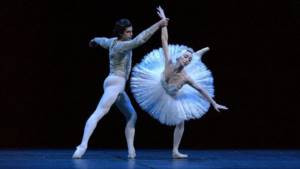
Nikolai Tsiskaridze and Elisabeth Platel perform a duet from “Swan Lake” staged by Rudolf Nureyev at the gala concert “Benois Stars - Laureates of Various Years”, 2005
Photo: RIA Novosti/Alexander Kurov
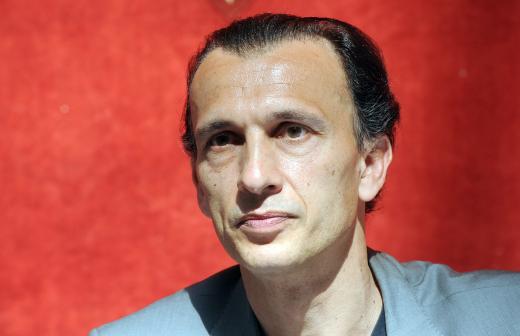
“I manage without a mask, I don’t have one”
MAMT ballet artistic director Laurent Hilaire talks about isolation in the south of France, happy artists and freedom within budgetary limits
— Laurent Hilaire has been heading MAMT for four years. Was his mission a success? What are the preliminary results?
“He pays great attention to his Russian artists and offers them performances that allow them to try themselves in something new. It seems to me that we need to work with artists not using revolutionary, but evolutionary methods, gradually, step by step, offering them something new. Laurent himself was very interested in getting acquainted with the previous repertoire of the Stanislavsky Theater and watching Swan Lake directed by Vladimir Burmeister, which was also performed on the stage of the Paris Opera. But if in Moscow it remained the same, then in Paris it has undergone changes.
— How does the French artistic director feel in Moscow?
- Very happy. One more point is important here. When you get to the Bolshoi or the Stanislavsky Theater, you immediately realize that you are in a country where the public loves ballet much more than in France. I remember how, at 18 years old, still a corps de ballet dancer, I first came with my theater to the Soviet Union - first we performed in Leningrad, and then in Moscow. There I dropped my suitcases at the hotel and immediately ran to the Bolshoi; for us it was always shrouded in a mystical aura.
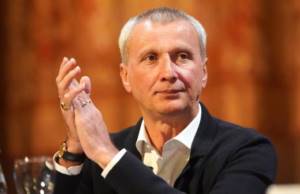
Taming the Dragon: What the Bolshoi Theater was missing
How in four years Mahar Vaziev managed to take ballet to a new level
—Which dancer can you call outstanding?
“If there is one at all, it is someone who will amaze me on stage, captivate me with his story and at the same time find a balance between virtuosity and expressiveness. Unfortunately, now sometimes you see an artist who dances wonderfully, but inexpressively.
— Maya Plisetskaya sighed: “Everyone dances superbly, but there are no personalities on stage.”
- This is the problem of the current era, when you have to achieve everything quickly, to please at any cost. Well, you have to sacrifice something, lose your own “I”. In the era of Plisetskaya it was different. On stage you remained yourself, there was no need to invent anything, the audience appreciated us for who we are. This also applies to Nureyev’s generation.
I remember how, during the first tour of our ballet in the United States, Rudolph presented The Swan. I danced at the premiere, after me the rest of the etouiles performed - Sylvie Guillem, Isabelle Guerin, Noella Le Pontois, Monique Loudier. The men were also amazing - Manuel Legris, Laurent Hilaire, Charles Jude, Cyril Atanasoff. It was fireworks. Everyone is amazingly different. We were not jealous of each other, because we knew: Rudolf values us all.
Nureyev taught us
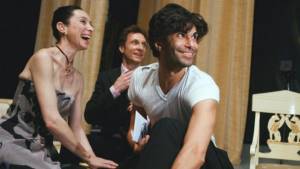
Elisabeth Platel, Laurent Hilaire and Nikolai Tsiskaridze before the 15th Benois de la Danse International Ballet Prize Award Ceremony, 2007
Photo: RIA Novosti/Ruslan Krivobok
— Do classical and modern dance manage to coexist in the theater without loss?
“When I started learning dance, everyone only said that classical dance was dead, but it is still alive and well. At the same time, interest in modern dance is growing. But it is connected to the present moment. Will today's productions still exist in 40 years or will they fade into oblivion? On the contrary, we still need “Swan”, “Giselle”, “La Bayadère”.
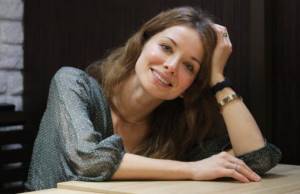
“I took a break from ballet while filming”
Bolshoi Theater prima Evgenia Obraztsova talks about her participation in the film “The Frenchman,” tired legs and the desire for a big family
Nureyev's productions also evoke admiration because they are grandiose performances with fabulous sets and costumes. When you learn that at the Bolshoi Theater ballerinas competed with each other to get the part of Tatiana in the ballet Onegin, you understand that they need similar roles. In a word, classical ballet did not live long. On the contrary, a truly beautiful classical dance becomes something exceptional. In ballet you cannot move forward without knowing the past. And in modern dance, some searches remain nothing more than searches.
“Ballet is a museum, but not an antiquities shop,” Oleg Vinogradov told Izvestia. Do you agree with him?
— No, it’s not a museum at all. The physical capabilities of the dancers, as in some of Forsythe's modern ballets, are pushed to the limit, but when you look at archival materials of the old masters, you realize that many of their lessons are still relevant.
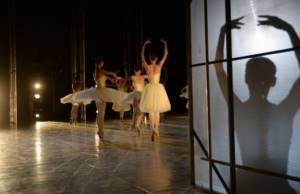
No need to denigrate: why the American prima will not change Russian ballet
A dark-skinned ballerina harassed Russian artists for their makeup in “La Bayadère”
“Ballet is a woman,” famous choreographer George Balanchine once proclaimed. Do you agree?
“This is how he could speak before the appearance of Rudolf and Maurice Bejart, who brought the dancer to the forefront. Neumeier and other choreographers followed the same path and created wonderful roles specifically for men. Therefore, I would say that now ballet is a mix of female and male.
— Is it better for an artist to serve in one theater or to be a free artist who dances in Moscow today and in Paris tomorrow?
“I made a choice and will remain faithful to the Paris Opera all my life.” It protected me, gave me confidence, helped me find myself and make an international career. To achieve success, those who are called freelancers must be such figures as Rudolf Nureyev or Sylvie Guillem.
— Are there any great names among modern choreographers today?
- Who's on everyone's lips today? Still the same: John Neumeier, who is over 80; Mats Ek, who staged his last ballet two years ago and his 80th birthday is just around the corner; Jiri Kylian is also far from young.
Nureyev taught us
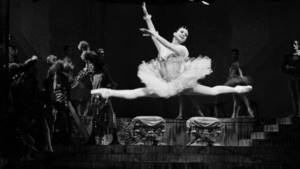
Elisabeth Platel in the ballet "The Sleeping Beauty" at the Paris Opera, 1983
Photo: Getty Images/Thierry Orban
- But there is also Alexey Ratmansky.
— I adore Alexey, he is fantastically talented and is now doing a lot of restoration of old ballets. For me, he is Russian Pierre Lacotte (French choreographer-restorer - Izvestia).
Izvestia Help
Elisabeth Platel was accepted into the Paris Opera ballet company in 1976. Five years later, at 22, she was elevated to the rank of etouile. She was awarded a silver medal at the International Ballet Competition in Varna. Rudolf Nureyev's favorite ballerina, she danced the main roles in his productions, as well as in ballets by George Balanchine, Maurice Béjart, Pierre Lacotte, John Neumeier and other choreographers. She has performed on the stages of leading theaters around the world. In 2004 she was appointed director of the Paris Opera Ballet School. She has starred in several documentaries dedicated to ballet. Officer of the Legion of Honor and Commander of the Order of Arts and Letters.
Hidden part
Work in the West
But, despite the problems, in 1959 Nureyev, as part of a theater troupe, went on tour abroad, to Vienna. Two years later, during another foreign tour in Paris, by decision of the KGB, he was removed from further performances that were to take place in London. The fact is that Nureyev refused to obey the rules for the stay of Soviet people abroad; the man left his room at any time and actively communicated with foreigners.
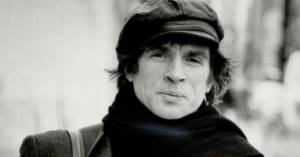
A shameful trial awaited him at home, so the dancer asked for political asylum in France. Remaining in Europe, Rudolph turned out to be extremely in demand. At first, he performed as part of the Marquis de Cuevas Ballet troupe, then moved to Denmark, where he met famous people - teacher Vera Volkova and dancer Erik Brun.
Then he was invited to her benefit performance by the English prima Margot Fonteyn. Afterwards, the management of the London Theater invited them to dance together in the play “Giselle”. From 1962 he signed a contract and performed on the stage of the Royal Theater for almost 15 years. The dancer toured all over the world, starred in various films, staged ballets and promoted talented young artists. In 1983, he became director of the ballet troupe of the famous Paris Opera and staged several performances.
Ballet
The first role that Rudolf Nureyev performed at a professional level was the role of Frondoso in the ballet Laurencia. Later, the dancer participated in the VII World Festival of Youth and Students in Vienna, where he was awarded a Gold Medal. Over the course of three years, Rudolf became an important link in the troupe, and great hopes were placed on him. He went on tour with the theater to Bulgaria, East Germany and Egypt, so Nureyev was given a French visa without any problems, and he went to perform at the Paris Opera. But literally after several performances, the KGB demanded that the young ballet dancer be removed from all performances and sent back to the USSR.
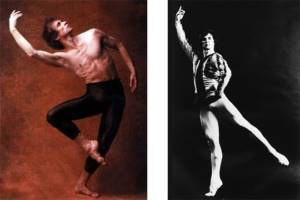
Photo by Rudolf Nureyev
We recommend: Alexandra Pakhmutova
According to the official version, he “violated the regime for staying abroad.” But eyewitnesses believe that the “authorities” learned about Rudolf Nureyev’s unconventional orientation. The dancer decided not to obey, requested political asylum in France and became one of the most famous “defectors” in the history of the Soviet Union, and imprisonment awaited him in his homeland. However, many years later, in 1985, he was allowed to enter the country for three days to attend his mother’s funeral. At the same time, all people who knew the artist in his youth were warned about a strict ban on communicating with him.
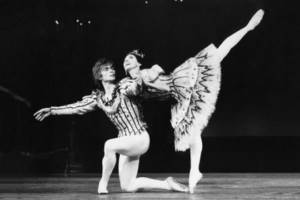
With long-term partner, ballerina Margot Fonteyn | Dance Heritage Coalition
In France, Rudolph joined the troupe of the Marquis de Cuevas Ballet, but six months later he was forced to leave the country, as he was denied political asylum. But Great Britain came to meet the talented artist halfway: Nuriev moved to London and, together with the ballerina Margot Fonteyn, created a duet on the stage of the Royal Ballet Covent Garden, which is still considered a reference. Later, the dancer became the premier of the Vienna Opera, as a result of which he received Austrian citizenship. But he was not limited to performing in one specific country. Nureyev worked very hard: in the 60s he gave 200 concerts a year, and by 1975 he began to appear on stage more than 300 times, that is, almost daily.
Date with mother
In 1987, the artist was able to obtain permission to travel to the USSR to see his dying mother. Interestingly, he was given a visa for only 72 hours, limiting Rudolf’s contacts with all former acquaintances. Three years after meeting her son, the woman died.

